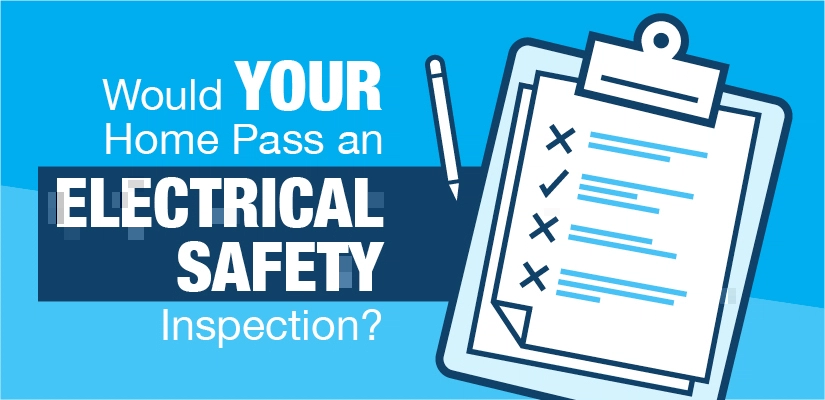
Mr. Electric outlines key steps to ensure your home passes an electrical safety inspection.
|
Think about how much you use electricity on a daily basis. Whether you’re cooking dinner, browsing the web, or blow-drying your hair, you rely on electricity more than you probably realize. You want to know that your appliances and outlets are functioning reliably so they work when you need them and don’t put your home at risk for an electrical fire.
Peace of mind can come from scheduling an electrical safety inspection with Mr. Electric. The Electrical Safety Foundation recommends these inspections if:
- You’re purchasing a home.
- Your home is more than 40 years old.
- You’re installing a new appliance.
- You recently renovated your home.
Let’s explore what it takes for a home to pass an electrical inspection room by room.
General Electrical Safety
If your home has any of the following defects, they could stop you from passing an electrical safety inspection:
- Old knob and tube wiring
- Broken or missing carbon monoxide detectors or smoke alarms
- New lights installed onto old wiring
- Overcrowded wires
- Non-IC-rated recessed lights that touch attic insulation
- Illegally spliced wires
Bathroom
A code-compliant bathroom meets the following requirements:
- The combination fan/light/heater has its own 20-amp circuit.
- All outlets are ground fault circuit interrupters (GFCI).
- Light fixtures in the shower or tub area are moisture-resistant and covered with a lens.
Kitchen
Electricity demand is high in the kitchen. Code requirements demand the following:
- Each motorized appliance has its own circuit, including the microwave, dishwasher, refrigerator, and garbage disposal.
- The electric range, cooktop, or oven has its own dedicated 240-volt circuit.
- A minimum of two receptacle circuits are installed above the countertop.
Laundry Room
For your laundry room to be code-compliant, it must meet these requirements:
- The washer and dryer are plugged into their own 20-amp receptacle.
- The electric dryer has its own 240-volt circuit.
Living, Dining & Bedrooms
While these rooms don’t usually feature large appliances, certain electrical codes still apply:
- Each room has a wall switch installed beside the entry door. This switch may control a ceiling light, sconce light, or outlet where a desk or standing lamp is plugged in.
- Ceiling fixtures are controlled by a wall switch, not a pull chain.
- Outlets are installed no further than 12 feet apart.
Hallways & Staircases
Even the halls and stairs in your home have specific electrical codes, largely because they serve as escape routes in the event of a fire, inclement weather, and another emergency. Here are the codes you must meet:
- Lights are located frequently enough along the hallway or staircase to prevent casting a shadow.
- Hallways longer than 10 feet feature an outlet for general purposes.
- Three-way switches are located at the top and bottom of each staircase and both ends of every hallway.
- If a staircase or corridor turns, additional lighting illuminates the area.
Attached Garage
The attached garage is an extension of your home and must meet these code requirements to pass an electrical safety inspection:
- At least one wall switch controls the lighting, which is in addition to the garage door opener light.
- Three-way switches are installed at the side door and the door leading out to the garage.
- At least one GFCI outlet is installed in the garage on its own circuit to accommodate power tools.
Schedule an Electrical Safety Inspection with Mr. Electric
We provide electrical safety inspections free of charge as part of every service call. The purpose of these courtesy inspections is to ensure our customers live in safe homes where electrical fires are unlikely to occur.
Contact Mr. Electric today to schedule an electrical safety inspection.
This blog is made available by Mr. Electric for educational purposes only to give the reader general information and a general understanding on the specific subject above. The blog should not be used as a substitute for a licensed electrical professional in your state or region. Check with city and state laws before performing any household project.

